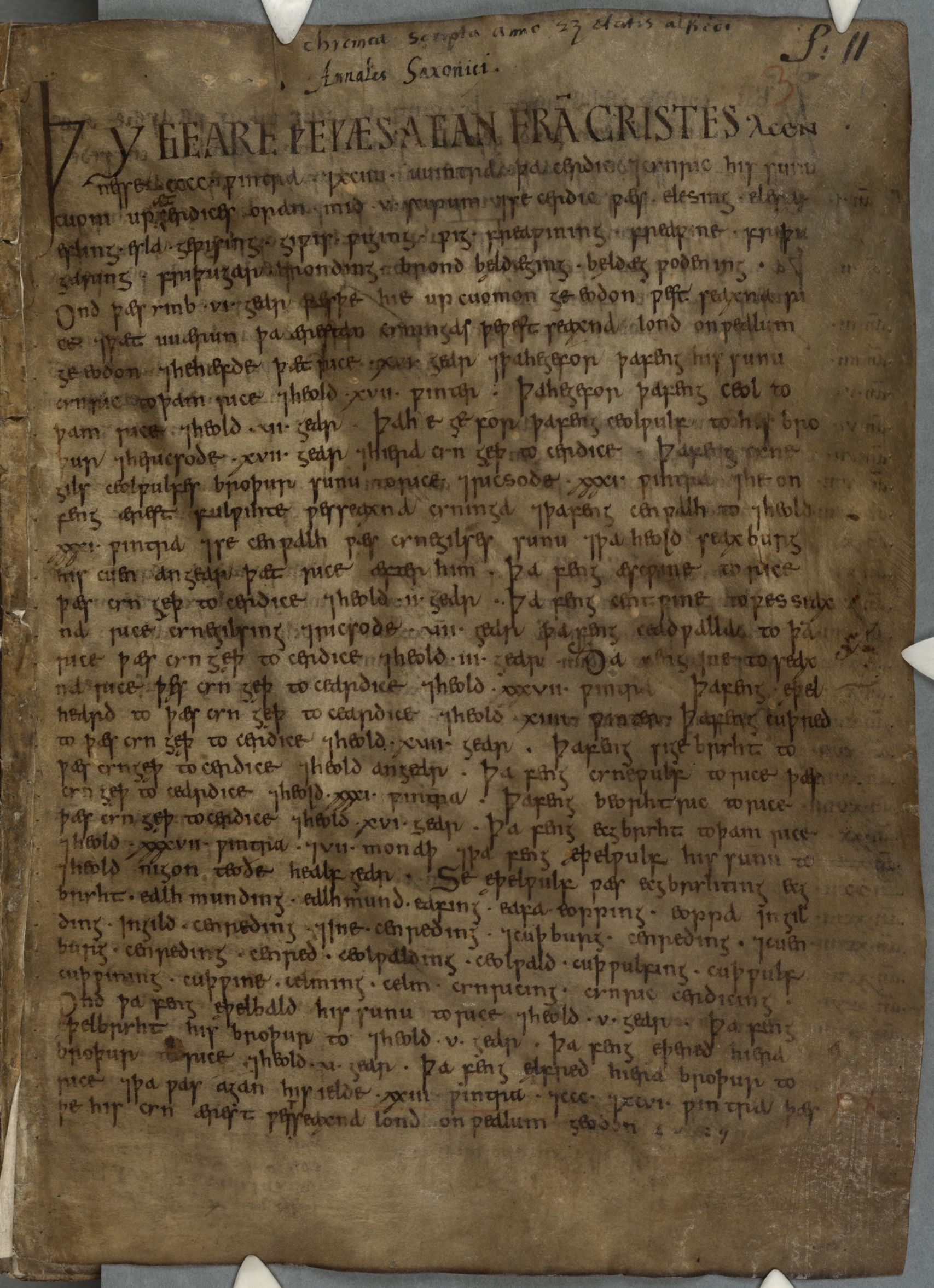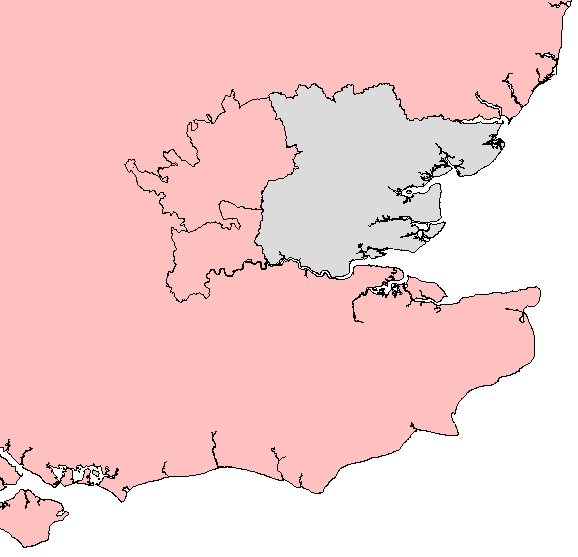|
Sigeheard Of Essex
Sigeheard was joint king of Essex along with his brother, Swaefred, from 694 to 709, succeeding their father Sæbbi. In 705, they became estranged from King Ine of Wessex for sheltering his rivals to the throne. At the Synod of Brentford, they agreed to banish the rivals from Essex in return for King Ine promising not to attack Essex. The exact chronology of the later years of their rule are uncertain. It is not known whether they governed together until 709 or if Swaefred died before then. Sigeheard along with Cenred of Mercia confirmed the purchase of Fulham from Tyrhtel (Thyrtell), Bishop of Hereford by Waldhere (Waldherus), Bishop of LondonFrank Stenton, ''Anglo-Saxon England'' (OUP, Third Edition, reissued 2001) (charter A charter is the grant of authority or rights, stating that the granter formally recognizes the prerogative of the recipient to exercise the rights specified. It is implicit that the granter retains superiority (or sovereignty), and that the rec ... ... [...More Info...] [...Related Items...] OR: [Wikipedia] [Google] [Baidu] |
Essex
Essex () is a county in the East of England. One of the home counties, it borders Suffolk and Cambridgeshire to the north, the North Sea to the east, Hertfordshire to the west, Kent across the estuary of the River Thames to the south, and Greater London to the south and south-west. There are three cities in Essex: Southend, Colchester and Chelmsford, in order of population. For the purposes of government statistics, Essex is placed in the East of England region. There are four definitions of the extent of Essex, the widest being the ancient county. Next, the largest is the former postal county, followed by the ceremonial county, with the smallest being the administrative county—the area administered by the County Council, which excludes the two unitary authorities of Thurrock and Southend-on-Sea. The ceremonial county occupies the eastern part of what was, during the Early Middle Ages, the Anglo-Saxon Kingdom of Essex. As well as rural areas and urban areas, it forms ... [...More Info...] [...Related Items...] OR: [Wikipedia] [Google] [Baidu] |
Sæbbi Of Essex
Sæbbi (also known as Saint Sebbi or Sebba; before 626 – 695) was son of Sexred and was the joint King of Essex from 664 to about 683 along with his cousin, Sighere. After Sighere died, Sæbbi became sole ruler of Essex until 694. Life Sighere and Sæbbi were cousins of their predecessor, Swithelm. In 665 Sighere apostatized and fell back into paganism, while Sebbi remained a faithful Christian. They soon developed a rivalry. Sighere found an ally in Wessex, and Sæbbi in Mercia. As a result of their rivalry, King Wulfhere of Mercia established himself as overlord of Essex in 665. He despatched Jaruman, the Bishop of Mercia, who was assigned to reconvert the people of Essex to Christianity. In 686, Cædwalla, a Wessex sub-king, established himself as overlord of Essex. He and Sæbbi invaded Kent, expelling King Eadric, and Sæbbi ruled over West Kent. It was presumably at the time that Sæbbi founded the original abbey at Westminster. Sæbbi is believed to have abdica ... [...More Info...] [...Related Items...] OR: [Wikipedia] [Google] [Baidu] |
Ine Of Wessex
Ine, also rendered Ini or Ina, ( la, Inus; c. AD 670 – after 726) was King of Wessex from 689 to 726. At Ine's accession, his kingdom dominated much of southern England. However, he was unable to retain the territorial gains of his predecessor, Cædwalla, who had expanded West Saxon territory substantially. By the end of Ine's reign, the kingdoms of Kent, Sussex, and Essex were no longer under West Saxon sway; however, Ine maintained control of what is now Hampshire, and consolidated and extended Wessex's territory in the western peninsula. Ine is noted for his code of laws (''Ines asetnessa'' or "laws of Ine"), which he issued in about 694. These laws were the first issued by an Anglo-Saxon king outside Kent. They shed much light on the history of Anglo-Saxon society, and reveal Ine's Christian convictions. Trade increased significantly during Ine's reign, with the town of Hamwic (now Southampton) becoming prominent. It was probably during Ine's reign that the West Saxons be ... [...More Info...] [...Related Items...] OR: [Wikipedia] [Google] [Baidu] |
Brentford
Brentford is a suburban town in West London, England and part of the London Borough of Hounslow. It lies at the confluence of the River Brent and the Thames, west of Charing Cross. Its economy has diverse company headquarters buildings which mark the start of the M4 corridor; in transport it also has two railway stations and Boston Manor Underground station on its north-west border with Hanwell. Brentford has a convenience shopping and dining venue grid of streets at its centre. Brentford at the start of the 21st century attracted regeneration of its little-used warehouse premises and docks including the re-modelling of the waterfront to provide more economically active shops, townhouses and apartments, some of which comprises Brentford Dock. A 19th and 20th centuries mixed social and private housing locality: New Brentford is contiguous with the Osterley neighbourhood of Isleworth and Syon Park and the Great West Road which has most of the largest business premises. H ... [...More Info...] [...Related Items...] OR: [Wikipedia] [Google] [Baidu] |
Cenred Of Mercia
Coenred (also spelled Cenred or Cœnred fl. 675–709) was king of Mercia from 704 to 709. Mercia was an Anglo-Saxon kingdom in the English Midlands. He was a son of the Mercian king Wulfhere, whose brother Æthelred succeeded to the throne in 675 on Wulfhere's death. In 704, Æthelred abdicated in favour of Coenred to become a monk. Coenred's reign is poorly documented, but a contemporary source records that he faced attacks from the Welsh. Coenred is not known to have married or had children, although later chronicles describe him as an ancestor of Wigstan, a 9th-century Mercian king. In 709, Coenred abdicated and went on pilgrimage to Rome, where he remained as a monk until his death. In the view of his contemporary, Bede, Coenred "who had ruled the kingdom of Mercia for some time and very nobly, with still greater nobility renounced the throne of his kingdom". Æthelred's son Ceolred succeeded Coenred as king of Mercia. Mercia in the 7th century By the 7th century, England ... [...More Info...] [...Related Items...] OR: [Wikipedia] [Google] [Baidu] |
Fulham
Fulham () is an area of the London Borough of Hammersmith & Fulham in West London, England, southwest of Charing Cross. It lies on the north bank of the River Thames, bordering Hammersmith, Kensington and Chelsea. The area faces Wandsworth, Putney, Barn Elms and the London Wetland Centre in Barnes. on the far side of the river. First recorded by name in 691, Fulham was a manor and ancient parish which originally included Hammersmith. Between 1900 and 1965, it was the Metropolitan Borough of Fulham, before its merger with the Metropolitan Borough of Hammersmith created the London Borough of Hammersmith and Fulham (known as the London Borough of Hammersmith from 1965 to 1979). The district is split between the western and south-western postal areas. Fulham has a history of industry and enterprise dating back to the 15th century, with pottery, tapestry-weaving, paper-making and brewing in the 17th and 18th centuries in present-day Fulham High Street, and later involvement in ... [...More Info...] [...Related Items...] OR: [Wikipedia] [Google] [Baidu] |
Thyrtell
__NOTOC__ Tyrhtel (died ) was a medieval Bishop of Hereford. Tyrhtel was consecrated in 688 and died between 705 and 710.Fryde, et al. ''Handbook of British Chronology'' p. 217 Notes Citations References * External links * 700s deaths Bishops of Hereford 7th-century English bishops 8th-century English bishops Year of birth unknown Year of death uncertain {{England-bishop-stub ... [...More Info...] [...Related Items...] OR: [Wikipedia] [Google] [Baidu] |
Waldherus
__NOTOC__ Waldhere (or Wealdheri; died between 705 and 716) was an early medieval Bishop of London, England. Waldhere was consecrated in 693. He died between 705 and 716.Fryde, et al. ''Handbook of British Chronology'' p. 219 A letter of his, written about 704 to Archbishop Bertwald of Canterbury still survives, and discusses the tension between King Ine of Wessex and the joint kings of Essex, Sigeheard and Swaefred.Kirby ''Earliest English Kings'' p. 106 The letter has been described by Sir Frank Stenton Sir Frank Merry Stenton, FBA (17 May 1880 – 15 September 1967) was an English historian of Anglo-Saxon England, and president of the Royal Historical Society (1937–1945). The son of Henry Stenton of Southwell, Nottinghamshire, he was edu ... as 'the first letter known to have been written from one English-man to another'.Stenton ''Anglo-Saxon England'' p. 142 Citations References * * * External links * Bishops of London 8th-century deaths ... [...More Info...] [...Related Items...] OR: [Wikipedia] [Google] [Baidu] |
Kingdom Of Essex
la, Regnum Orientalium Saxonum , conventional_long_name = Kingdom of the East Saxons , common_name = Essex , era = Heptarchy , status = , status_text = , government_type = Monarchy , event_start = , date_start = , year_start = 527 , event_end = , date_end = , year_end = 825 , event1 = , date_event1 = , event2 = , date_event2 = , event3 = , date_event3 = , event4 = , date_event4 = , p1 = Sub-Roman Britain , flag_p1 = Vexilloid of the Roman Empire.svg , border_p1 = no , s1 = Kingdom of England , flag_s1 = Flag of Wessex.svg , border_s1 = no , image_flag = , flag = , flag_type = , image_ ... [...More Info...] [...Related Items...] OR: [Wikipedia] [Google] [Baidu] |
Offa Of Essex
Offa was King of Essex. D. H. Kirby dates his reign as 705 to 709. Simon Keynes dates it c.694 to 709, when he went on a pilgrimage to Rome, where he died as a monk, along with Cenred, King of Mercia. He may have been co-king with Swæfred. He was the son of Sighere, who had died in about 690. In his ''Historia ecclesiastica gentis Anglorum'', Bede described him as "a youth of most lovely age and beauty, and most earnestly desired by all his nation to be their king. He, with like devotion, quit his wife, lands, kindred and country, for Christ and for the Gospel, that he might receive an hundredfold in this life, and in the world to Come life everlasting. He also, when they came to the holy places at Rome, receiving the tonsure, and adopting a monastic life, attained the long wished-for sight of the blessed apostles in heaven." A charter related to land in Warwickshire (S64) is attributed to him, although in it he is described as King of Mercia rather than Essex. This may b ... [...More Info...] [...Related Items...] OR: [Wikipedia] [Google] [Baidu] |



